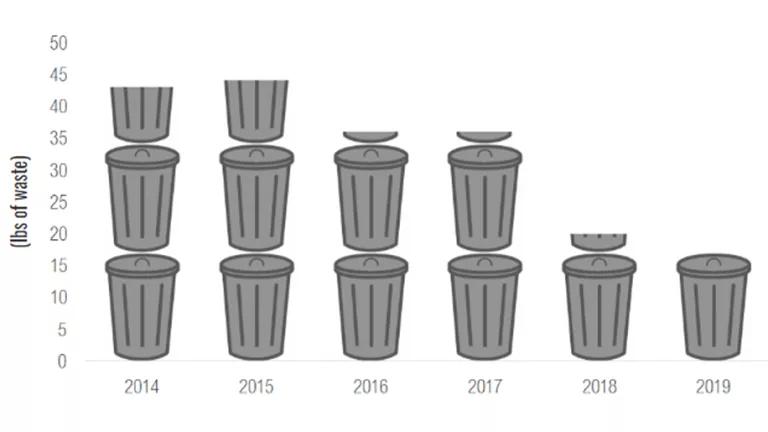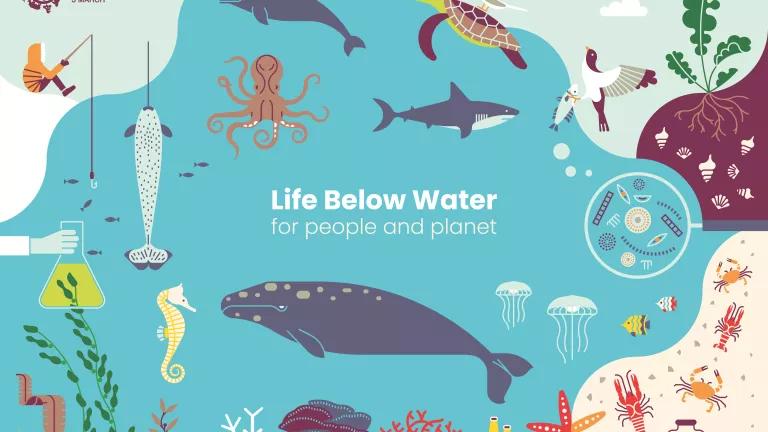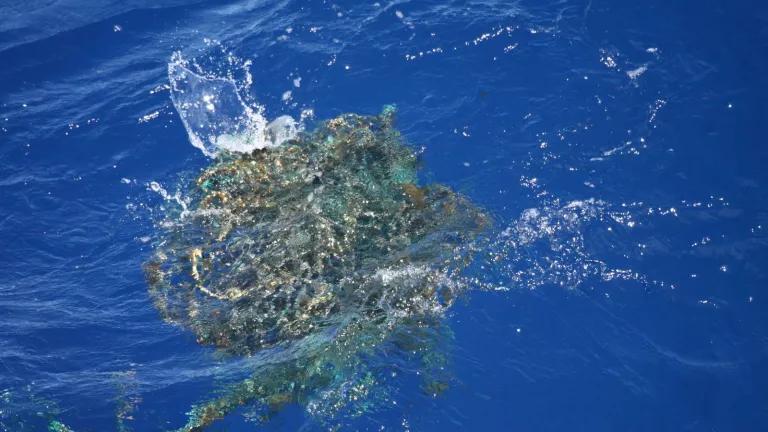Getting Away From Throwing Away: NRDC Is Going Zero Waste
Landfills and incinerators pose a threat to public health and the environment. The NRDC Zero Waste Directive gives a framework for integrating zero waste.

Figure 1. The average weight (lbs) of waste each NRDC staff member sends to the landfill annually
Where does your trash go when you throw it “away”? The reality is “away” doesn’t exist. On average, you will send an estimated 43,000 pounds of waste to the landfill during your lifetime. It is due to these individual impacts that the United States’ landfills and incinerators are filled with over 171 million tons of municipal solid waste (MSW) each year.[1] MSW landfills and incinerators pose a significant threat to public health and the environment:
- Landfills are not designed to breakdown waste. Once filled—typically in 30 to 50 years—the waste can stick around for another 500+ years emitting greenhouse gases, contaminating groundwater, and displacing approximately 30 to 300 species per hectare of flora and fauna.[2]
- The incineration of 1 ton of MSW produces roughly 1 ton of carbon dioxide (CO2).[3]
- Both landfills and incinerators have been linked to birth defects, respiratory illness, and cancer.
How can we move away from landfills and incinerators?
In Vision 3 of the NRDC Sustainable Operations Plan, we make a commitment to achieving zero waste. We strive to divert at least 90 percent of solid, liquid (excluding wastewater), organic, and hazardous waste generated from incineration and landfills. We see zero waste as both limiting the total amount of waste generated and responsibly managing all unwanted or unusable materials at NRDC offices.
As an organization, we have increased our diversion rate from 75 percent to 82 percent from 2013 to 2019. We have also been strategic in maintaining overall increase in diversion rate and reduction in per capita waste generation (Figure 1). In 2018, we celebrated our Santa Monica office reaching operational zero waste. Even with this positive trend, it is clear that obstacles to organizational zero waste remain.
What role does the NRDC Zero Waste Directive play?
The NRDC Zero Waste Directive (ZWD) is designed to address common obstacles through actionable solutions. The solutions, which are reflected in the ZWD strategies, incorporate:
- Monitoring. Knowing our baseline waste production is crucial to tracking the progress of the ZWD strategies. A baseline is derived through recording and assessing existing waste streams, waste stations, and availability of staff/visitor education.
- Evaluating office design and flow. We design our offices in accordance with the path of least resistance to minimize waste and encourage sustainable practices. This includes understanding and reacting to both occupant behavior and the flow of goods delivered and discarded at NRDC offices.
- Improving waste station consistency. It is important to have waste stations sized appropriately (i.e. all recycling, compost, and landfill bins are sized to accommodate the quantity and type of waste generated in each office) and clearly labeled. When space allows, these waste stations contain all discard streams (recycling, compost, landfill, and alternative recycling) and educate the users on our waste goals.
- Educating staff, visitors, and vendors. We educate staff and visitors on organizational waste practices, diversion rate, and other waste reduction strategies. Education is central to sustained practice and positive ripple effect.
- Purchasing sustainably. When purchasing products, we assess: production (requirements to make a product), use (how use of the product impacts humans and the planet), and post-use (how disposal of the product impacts the planet). We support nearby manufacturers that produce long-life, recycled content, and low-embodied carbon products free of harmful chemicals. Manufacturers are requested to use packaging that is recyclable or reusable and minimal shipping material. Additionally, manufacturers share opportunities for product repair and end-of-life options (recycling, take-back program, reuse, etc.). To align our food purchases with our mission, we created the NRDC Catering Policy.
- Reducing and disposing of construction waste responsibly. We minimize and divert all construction waste by applying a Construction Waste Management Plan as outlined in the NRDC Design & Construction Protocols.
- Purchasing carbon offsets based on our environmental impact calculations. To help offset the emissions associated with NRDC’s waste, carbon offsets are purchased annually. We do not see carbon offsets as a solution; it is only used to help mitigate our impact until we reach our zero-waste vision.
Seeing the light at the end of the landfill
Businesses, communities, and governments are pursuing zero waste goals and policies, ranging from restrictions on distributing single-use plastic products to setting specific percentage goals on waste generation/diversion. These types of changes are prompted by people like you. Reach out to your local representative and urge your company to follow suit. Together, we can make landfills and incinerators obsolete.
[1] https://www.epa.gov/facts-and-figures-about-materials-waste-and-recycling/national-overview-facts-and-figures-materials
[2] https://sciencing.com/effects-landfills-environment-8662463.html
[3] https://www.ipcc-nggip.iges.or.jp/public/gp/bgp/5_3_Waste_Incineration…;


